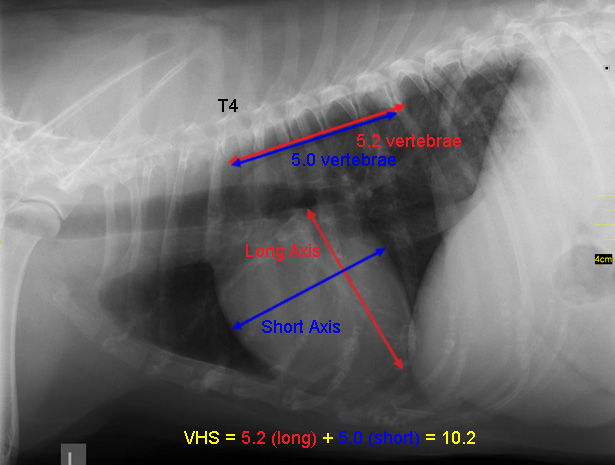Vertebral Heart Size (VHS) is a technique that measures the width and breadth of the heart and compares it to the length of the vertebral bodies. It can be useful because the measurements are independent of respiration and the position of the heart within the chest. However, because of the test’s low sensitivity, a normal VHS does not rule out an enlarged heart. It also does not rule out the possibility of cardiac disease that does not have an effect on heart size.
To calculate VHS, use a lateral view that clearly shows the T4-T13 vertebrae, with minimal rotation of the thorax (rib arches and costochondral junctions should be aligned).
Long axis: Measure the distance (using a ruler or piece of paper) from the carina to the apex of the heart.
Short axis: Measure the widest part of the heart on an axis perpendicular to the long axis.
Compare to vertebrae: Starting from the cranial edge of the T4 vertebral body, measure the length of the axes by the number of vertebrae. Measure to 0.1 of a vertebral body. The vertebral heart size is the sum of the length of the short and the long axes in vertebrae (VHS = long + short).

Reference intervals for VHS:
- Normal dogs: 8.5-10.7
- Boxers: 10.3-12.6
- Labrador Retrievers: 9.7-11.7
- Cavalier King Charles Spaniels: 9.9-11.7
- Cats: 6.7-8.1
